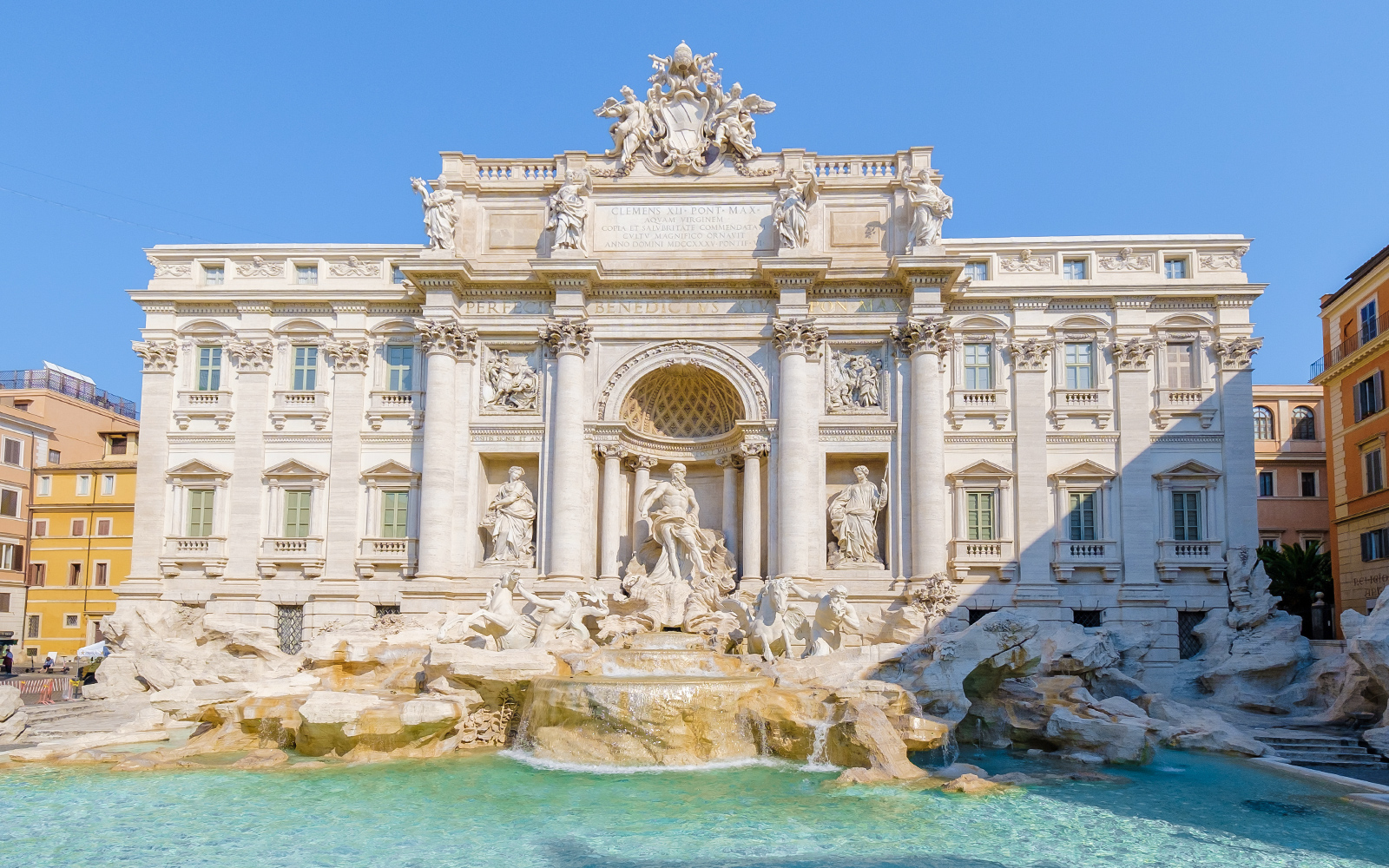The Roman Forum was once the centre of ancient Roman life. As the heart of political, religious, and commercial activities, the Roman Forum witnessed numerous significant events throughout history. The forum also featured many temples to the Roman gods and served as a marketplace for the citizens. Today, it lies in ruins but continues to draw a number of tourists every year!
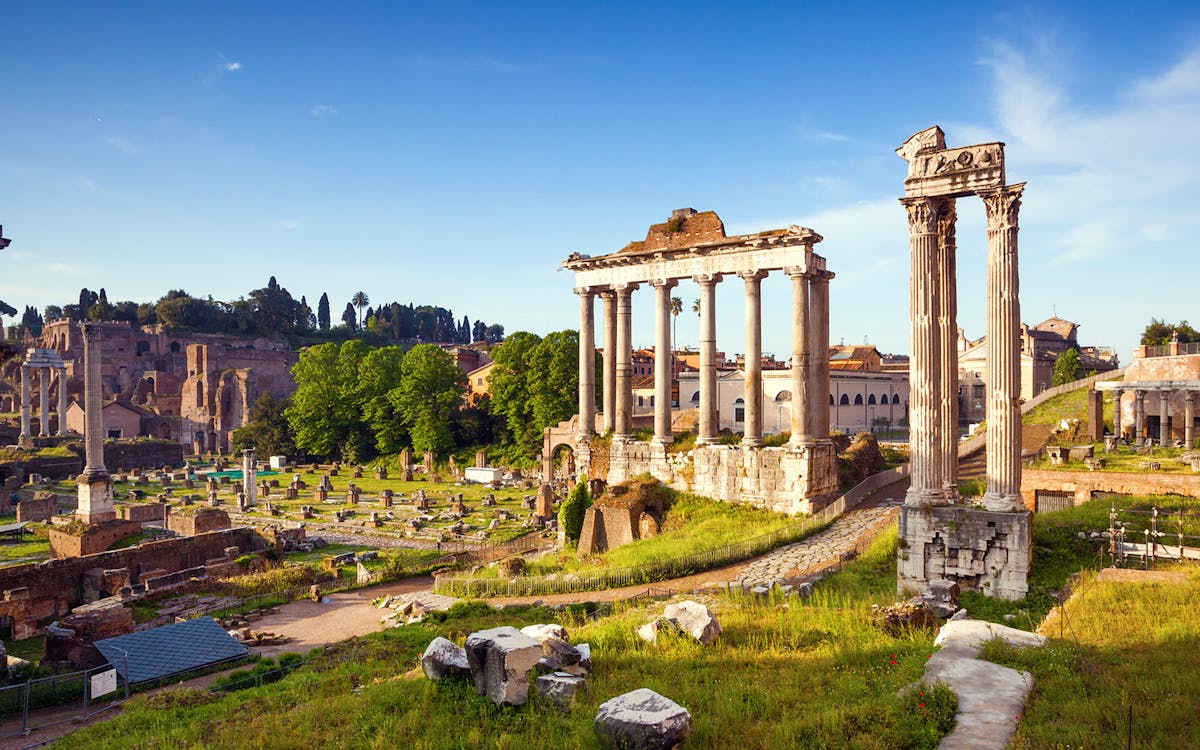
Know Before You Go
Handy information
| ⏰ Suggested Duration: | 2-3 hours |
| ☀️ Best Time to Visit: | Early morning or late afternoon |
| 🚇 Nearest Metro: | Colosseo |
Must See
- Basilica of Maxentius
- Temple of Romulus
- Temple of Antoninus and Faustina
- Temple of Vesta and Eternal Flame of Rome
- Mamertine Prison
- Temple of Castor and Pollux
Things To Know
- Constructed in: 8th century
- Rediscovered by: Carlo Fea
- Architectural Influence: Classical Greek
Opening Hours And Address
Monday to Sunday: 09:00 AM to 04:30 PM
Via della Salara Vecchia, 5/6, 00186 Roma RM, Italy Get Directions
Why Visit the Roman Forum
- The Roman Forum is a site of immense historical importance, serving as the political, social, and economic center of ancient Rome. The Public Square witnessed the rise and fall of the Roman Empire, making it a must-visit for history enthusiasts.
- Marvel at the stunning architectural remains of temples, basilicas, and the iconic Arch of Septimius Severus.
- Visiting the Roman Forum provides a valuable educational experience, allowing you to learn about Roman history in a tangible and immersive way.
- As you wander through the Roman Forum, you'll be treated to breathtaking views of iconic landmarks such as the Colosseum and Palatine Hill.
Recommended Tickets
History of the Roman Forum
Human activity in the area that is now known as the Roman Forum dates to approximately the 7th century BCE when Rome’s Etruscan kings constructed the Cloaca Maxima, a sewer that drained the water off the valley. Today, the Cloaca continues to run under the Forum and drains water into the nearby Tiber River.
After the Roman Republic was formed in 509 BCE, the development of the Forum began in full swing. The oldest structures on the Forum that are still visible, even though in a ruined state, include the Temple of Castor and Pollux and the Temple of Saturn.
The Forum also had a ‘rostra’, a raised speakers’ platform, that allowed a huge crowd to gather and witness politicians orate. With the addition of new buildings, including the courtrooms, or basilicas, the Forum grew to be the hub of the Republic.
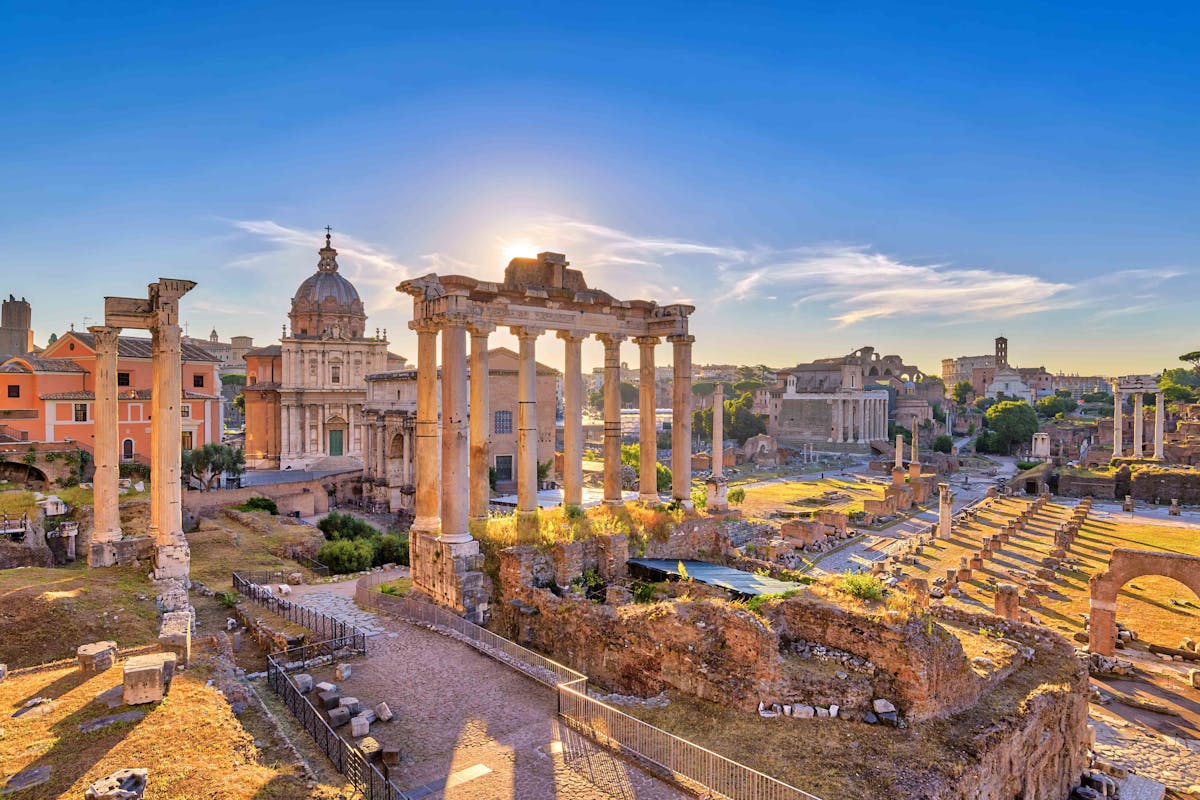
Architecture At Roman Forum
The Roman Forum was known for its impressive architecture. Temples were a prominent feature, such as the Temple of Saturn and the Temple of Vesta. These were places of worship for the ancient Romans. The basilicas were another important architectural element. These large, rectangular buildings were used for various purposes, including as law courts and meeting places. One of the most famous basilicas in the Roman Forum was the Basilica Julia.
The Roman Forum was also characterized by its columned walkways, known as porticos. These walkways provided shade and shelter for visitors, as well as a place to gather and socialize. Another notable architectural feature of the Roman Forum was its triumphal arches. These grand structures were built to commemorate military victories and to honor emperors. The most famous of these arches is the Arch of Titus, which still stands today.
Highlights Of The Roman Forum
1Basilica of Maxentius
Originally known as the Basilica of Maxentius, the Basilica of Constantine is a large roofed hall in Rome that was made by the emperor Maxentius and completed by Constantine during AD 313. Maxentius had commissioned the building as part of a larger infrastructure campaign. This wide-scaled project was used as an economic and political setup that was meant to act as a visual sign of the empire’s prosperity under the reign of Maxentius.
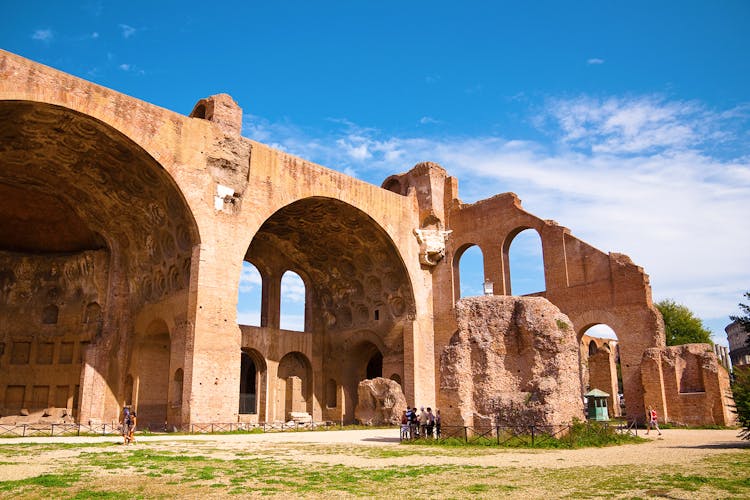
2Temple of Vesta
The Temple of Vesta is an ancient temple that held the ‘Sacred Fire’ and its eternal flame was guarded by the Vestals. Six priestesses were selected as children from important Roman families. Right next to the Temple of Vesta lies the house of Vestal Virgins, which was built by Septimius Severus.
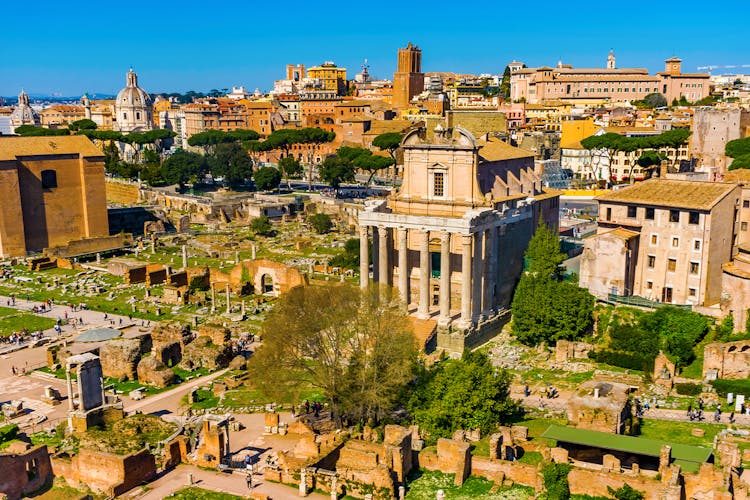
3Temple of Castor and Pollux
The Temple of Castor and Pollux was built in the final decade of the 1st century BCE, replacing the previous temple to the twin sons of Jupiter that stood on the site since 484 BCE. Currently, only the inner concrete core of the podium along with three columns survive this massive structure.
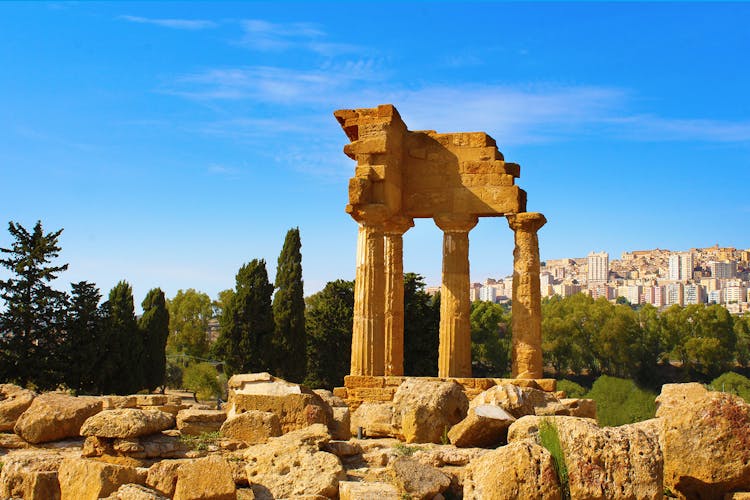
4The Curia
The Roman Curia is a combination of the administrative institutions of the Holy See and the central body with which the affairs of the Catholic Church are held. It is an institution that the Roman Pontiff ordinarily made use of in the exercise of the universal mission and supreme pastoral office.
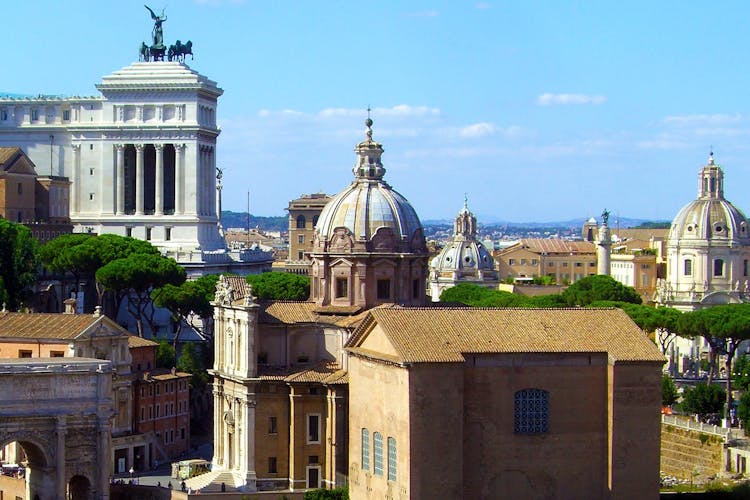
5Temple of Saturn
The Temple of Saturn is an ancient temple in Rome that is dedicated to Saturn where its ruins stand at the foot of the Capitoline Hill at the western edge of the Roman Forum. The Temple of Saturn has a history that goes back to 497 BC, and the current ruins portray the third version of the temple that was constructed to replace the version which was destroyed by the fire of Carinus in 283 AD.
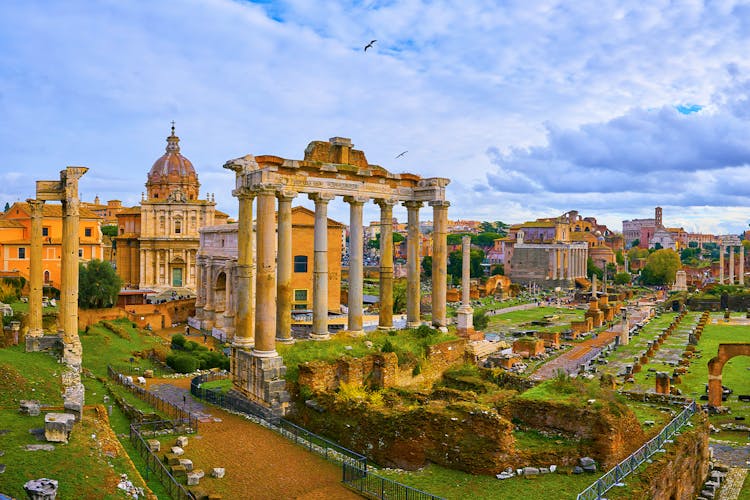
6Temple of Romulus
Set between two porphyry columns are the original bronze doors of the Temple of Romulus, deified by his father Maxentius in AD 309. The space opens into a rotunda fifty Roman feet in diameter and is covered by a cupola. It is now accessible from the rear through the Basilica of Santi Cosma Damiano.
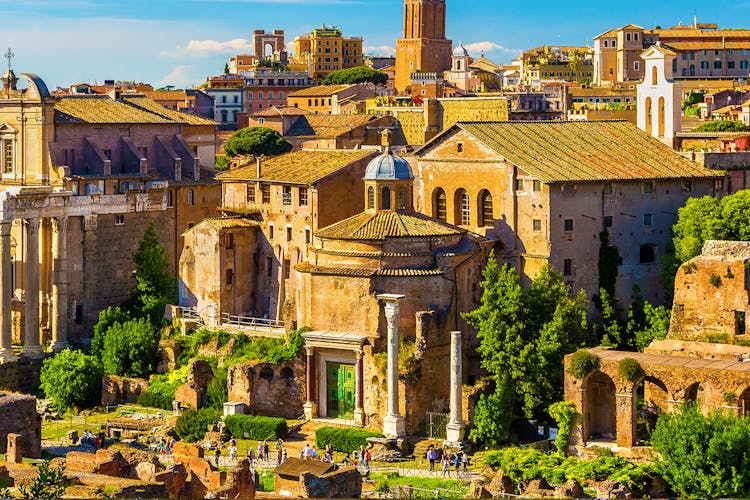
7Antonius and Faustina Temple
The Temple of Antoninus and Faustina honoured the deified empress (Faustina), who predeceased her husband (Antoninus) in 141 A.D. During the Mediaeval period, the temple was revamped into the Church of Saint Lawrence in Miranda, and a lot of the monument was torn down. A lot of events that took place during the 15th and 16th centuries also resulted in impacting the temple’s interior and exterior architecture.
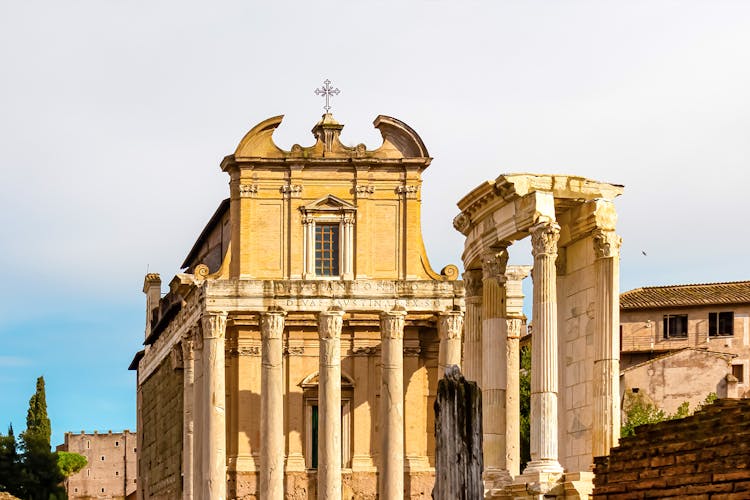
8Via Sacra
The Via Sacra, otherwise known as the Sacred Way, was the main street that led travellers and citizens into the main region of business, called the Forum. This place was also used to inculcate the religious faith of Roman people to any newcomers, by displaying temples at the Forum’s entrance. The Via Sacra was situated at the centre of everything in Ancient Rome – as the heart of religious, government, social and cultural importance.
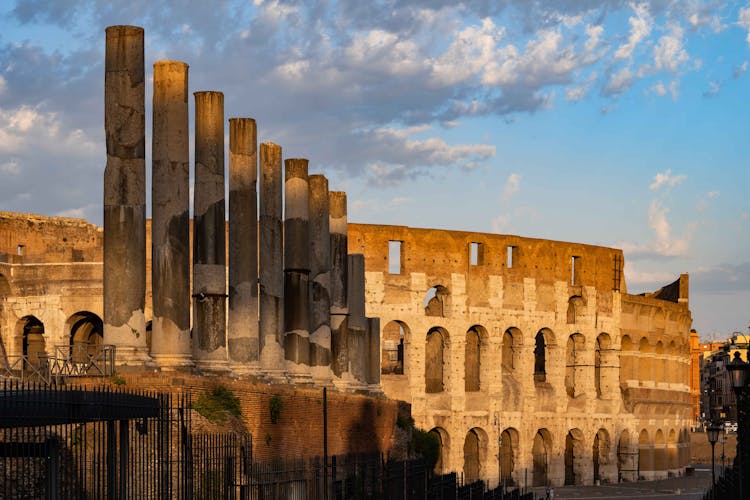
Best Time To Visit The Roman Forum
The best time to visit the Roman Forum is during the early morning or late afternoon, when the temperatures are cooler and there are fewer crowds. It is recommended to arrive early to avoid long queues and to have more time to explore the site. Additionally, visiting during the off-peak seasons, such as spring or autumn, can also help avoid large crowds. Remember to wear comfortable shoes and bring water, as there is a lot of walking involved.
Read more about best time to visit Rome here!
Roman Forum Timings
The Roman Forum and Palatine Hill are open year round. The gates are open from 09:00 AM until 7:15 PM
Getting There
There are several options to travel from the city center to the Roman Forum. While you can always opt for a cab from wherever you’re staying, expect to pay a pretty penny. Cab fares are not cheap and it’s not uncommon for tourists to get overcharged. Instead, checkout some of the (cheap) public transport options below that’ll get you to the area easily and safely.
Bus
Line 51, 75, 81, 673, 175, or 204. Alternatively, you can take tram. #30, which has a stop at the Roman Forum.
Tram
Line 3
Metro
Line B “Colosseo”
The metro is perhaps the easiest way to reach the Roman Forum. You can get down at the Colosseo Metro Station on the B Line and then walk to the Roman Forum or Palatine Hill. The metro runs from 5:30 AM to 11:30 PM, Sunday to Thursday, and until 1:30 AM on Friday and Saturday.
If you have reached the Termini train station, the main railway station of Rome, there are two ways you can reach the Roman Forum/Colosseum/Palatine Hill area:
Via Foot
If you’re in the mood for a leisurely hike through the charming lanes of Rome, you can walk from the train station to the ruins. The average walking time is 30 minutes, so only go for this option if you have ample time on hand.
The Roman Forum Facts
- The Roman Forum has got only one entrance, which is situated at the Via Fori Imperiali.
- The Roman Forum is home to the tomb of Romulus. The story of Romulus, the one who founded Rome, is a tangle of myth, and folklore, so whether or not a historical figure ever existed is unclear.
- The Temple of Caesar is sometimes referred to as the burial ground of Caesar’s grave but is the actual spot where he was cremated in 44 BC.
- The Curia was the actual seat of the Roman Senate. It was from this very building those consuls, praetors, and tribune made administrative decisions on running the Republic and Empire.
- Apart from just visiting the Roman Forum you can get a ticket to the Colosseum and the Palatine Hill on the very same ticket as they are situated right next to one another.
- The Temple of Saturn is dedicated to the god of wealth and held the Roman Republic’s treasury, as well as the state archives.
- During the late republic, violence was common during the meetings. Hence severe heads were kept on display. Cicero was among those who met with an ill fate and his head and hands were turned into a public spectacle.
- The Roman Forum fell into disrepair after the fall of the Empire and most of its monuments were either plundered in exchange for stone and marble or buried under debris. Hence, during the middle ages, it was known as the ‘Cow Field’.
Insider Tips
- Carry sunscreen if you're travellnig to Rome in the summer months; it gets hot!
- Book your tickets to the destination online to move faster through the queues.
- The view of Rome and the Forum is best seen atop Palatine Hill.
- The entire complex is free for visitors on the first Sunday of the month; it will be crowded though!
Restaurants Near Roman Forum
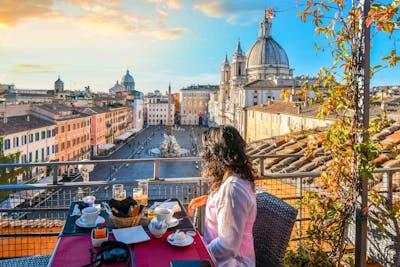
Ristorante Roof Garden is a charming restaurant located near the Roman Forum. It offers a unique dining experience with its rooftop setting that provides stunning views of the historical site.
Distance from Roman Forum: 270 meters

Lari The Vino offers a wide selection of Italian wines, perfect for wine enthusiasts. The cozy atmosphere and knowledgeable staff make it a great place to relax and enjoy a glass of wine after exploring the Forum.
Distance from Roman Forum: 300 meters

With its cozy ambiance and delightful menu, it offers a perfect respite after exploring the historical site. Fafiuché is known for its authentic Italian cuisine, including delectable pasta dishes and mouthwatering pizzas.
Distance from Roman Forum: 400 meters

Pizzeria alle Carrette is a popular restaurant located near the Roman Forum. Known for its delicious pizzas, it offers a wide variety of toppings and crust options.
Distance from Roman Forum: 350 meters
Attractions Near The Roman Forum
Hotels Near The Roman Forum
FAQs
The Roman Forum, also known as Forum Romanum in Latin, is a rectangular forum that is surrounded by the ruins of various ancient government buildings at the heart of the city of Rome.
The most important forum in ancient Rome, the Roman Forum is located on low ground between the Palatine and Capitoline hills.
Plenty of historians believe that people began publicly meeting in the open-air Forum around 500 B.C. when the Roman Republic was discovered.
The columns of the Temple of Saturn continue to dominate the Roman Forum. The remains of this temple are undoubtedly the most impressive in Rome and provide an idea of its prominence in the ancient city.
In the current scenario, the Roman Forum is a very popular tourist attraction where visitors can witness the ancient ruins and architectural fragments that remain. Efforts continue to be in place to preserve the ruins. Excavations are in place in and around the Forum.
Yes, guided tours of the Roman Forum are available. There isn’t much information on display around the Forum, and visitors tend to wander around. By going on a guided tour, you can make the most of your visit as you will get an insight into the history and architecture of the place.
No, there aren’t any particular restrictions on visiting the Roman Forum. However, wear comfortable footwear as you will be doing a lot of walking to explore the space.



